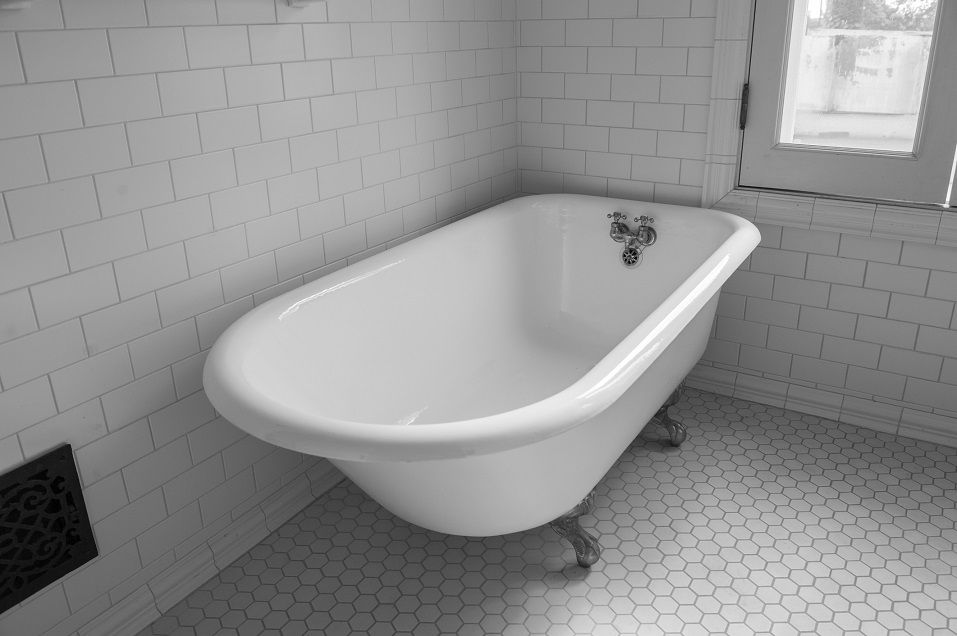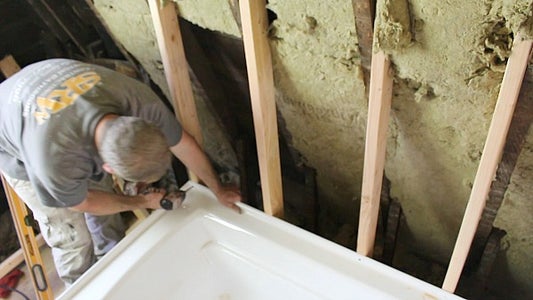Here down the page you might get a good deal of reliable facts all about How to Install a Bathtub: Install an Acrylic Tub and Tub Surround.

Mounting a bathtub isn't exactly rocket science, but it does call for solid plumbing, woodworking, and also often, tiling skills. Replacing an old bathtub with a brand-new one is likewise a reasonably challenging task. If the old bathtub is conveniently accessible, the job can move immediately; if you have to open up a wall to remove the old tub and position the brand-new tub, the task is a lot harder. In either instance, the project is within a home handyman's skills, although you will certainly need an assistant to vacate the old tub and embeded in the new one. Make certain you have actually qualified yourself for the job as well as fit attempting it. Instead of working with a specialist to take control of a halfway-completed task, it is much better to take into consideration employing one before you begin. Possibilities are you may require an expert plumber to make tube connections.
This post will assist you mount a brand-new bath tub in your washroom if you have already bought a brand-new bathtub and also don't need to change the plan of your previous supply of water pipelines.
Your devices and material list must comprise the following:
Removing Old Touches
If you need to replace old faucets with new ones as a part of your setup, then the first thing you should do is detach the water system. After doing so, switch on the taps to drain any kind of water remaining in the system. The process of eliminating the existing faucets can be fairly troublesome because of the limited accessibility that is commonly the situation.
Make use of a container wrench (crowsfoot spanner) or a tap tool to reverse the nut that attaches the supply pipelines to the faucets. Have a cloth all set for the staying water that will certainly come from the pipes. When the supply pipelines have actually been gotten rid of, use the same device to loosen the nut that holds the taps onto the bath/basin. You will need to quit the single faucets from transforming throughout this procedure. When the taps have been removed, the holes in the bath/basin will certainly have to be cleansed of any type of old securing compound.
Before proceeding to fit the new faucets, compare the pipe connections on the old faucets to the new faucets. If the old faucets are longer than the brand-new faucets, then a shank adapter is needed for the brand-new taps to fit.
Suitable New Touches
If the tails of the new taps are plastic, then you will certainly need a plastic port to avoid damage to the thread. One end of the adapter fits on the plastic tail of the tap as well as the various other end supplies a link to the existing supply pipes.
If you need to fit a monobloc, after that you will need minimizing couplers, which attaches the 10mm pipeline of the monobloc to the conventional 15mm supply pipe.
Next off, position the faucet in the installing hole in the bath/basin making certain that the washing machines remain in area between the faucet as well as the sink. Safeguard the faucet in place with the maker supplied backnut. Once the faucet is firmly in position, the supply pipes can be connected to the tails of the faucets. The faucets can either be attached by using corrugated copper piping or with normal faucet connectors. The previous kind should be linked to the tap finishes initially, tightening only by hand. The supply pipelines can later be connected to the other end. Tighten up both ends with a spanner after both ends have been linked.
Installing the Bathtub
Using the two wooden boards under its feet, put the tub in the required setting. The wood boards are valuable in evenly spreading out the weight of the bath tub over the location of the boards as opposed to focusing all the weight onto 4 small points.
The next objective is to make certain that the bath tub is leveled all round. This can be achieved by inspecting the level and also changing the feet on the bathtub up until the level checks out level.
To set up taps, fit the bottom of the furthest versatile tap port to the ideal supply pipe by making a compression join; after that do the exact same for the various other faucet.
Turn on the water supply and also examine all joints and new pipework for leaks as well as tighten them if needed. Fill up the bathtub as well as also inspect the overflow outlet as well as the typical outlet for leaks.
Lastly, repair the bathroom paneling as explained in the maker's user's manual. Tiling and securing around the bath tub should wait until the bathtub has actually been made use of a minimum of when as this will resolve it into its last setting.
Getting ready for the Setup
Firstly, the sustaining structure supplied with the bath should be fitted (if called for) according to the supplier's instructions. Next, fit the taps or mixer to the bathtub. When suitable the faucet block, it is essential to make sure that if the faucet features a plastic washer, it is fitted in between the bath as well as the faucets. On a plastic bathroom, it is also practical to fit a supporting plate under the faucets unit to prevent strain on the bathtub.
Fit the flexible faucet adapters to the bottom of the two taps making use of 2 nuts and also olives (often supplied with the tub). Fit the plug-hole electrical outlet by smearing mastic filler round the sink electrical outlet hole, and after that pass the outlet with the hole in the bathroom. Use the nut supplied by the producer to fit the plug-hole. Check out the plug-hole outlet for an inlet on the side for the overflow pipe.
Next off, fit completion of the flexible overflow pipe to the overflow outlet. Afterwards, screw the pipeline to the overflow face which need to be fitted inside the bath. See to it you make use of all of the supplied washers.
Attach the catch to the bottom of the waste outlet on the bathtub by winding the string of the waste outlet with silicone mastic or PTFE tape, and also screw on the catch to the outlet. Connect the bottom of the overflow tube in a similar manner.The bath must now be ready to be suited its final placement.
Tiling Around the Bathtub
In the area where the bathroom meets the ceramic tile, it is necessary to seal the joins with a silicone rubber caulking. This is very important as the fitting can relocate sufficient to fracture a rigid seal, creating the water to permeate the wall surface between the bath and the tiling, leading to problems with dampness as well as possible leakages to the ceiling listed below.
You can select from a range of coloured sealers to assimilate your fixtures and installations. They are sold in tubes as well as cartridges, and also can sealing spaces approximately a width of 3mm (1/8 inch). If you have a larger void to fill, you can load it with twists of soaked paper or soft rope. Bear in mind to constantly fill up the bathtub with water before sealing, to allow for the activity experienced when the bathtub remains in use. The sealer can crack fairly early if you do not take into consideration this activity prior to securing.
Conversely, ceramic coving or quadrant tiles can be used to edge the bathroom or shower tray. Plastic strips of coving, which are easy to use and cut to size, are also quickly readily available on the marketplace. It is recommended to fit the tiles making use of waterproof or waterproof glue and grout.
Bathtub Installation
How Important Is A Bathtub To Your Home?
High-quality baths, showers, and other bathroom updates are necessary when considering a smart investment in your home. It’s a room that you go to every day and one that is constantly being used by guests.The bathroom is one of the top trafficked rooms in a home and also one of the most valuable in terms of home resale.
Install Piping Before Tub
You will be using your existing drain and waste vent system, but pipes required include the hot and cold water supply lines and a pipe leading to a shower head. A mixing valve and shower head are also needed. Air chambers may be required.
Position the Tub
Lower the tub into place so that the continuous flange fits against the wall studs and rests on 1’x4' or 2’x4' supports. Anchor the tub to the enclosure with nails or screws inserted through the flanges into the studs.
NOTE: Remember, bathtubs and shower stalls may require support framing. A bathtub filled with water is extremely heavy, so check building codes and framing support before installing the tub.
Assemble Drain Connections
Assemble the bathtub drain connections by connecting the tub overflow with the tub drain above the trap, not beyond it. The trap will have a compression fitting that screws over the arm of the overflow assembly.
Place a Pipe For the Shower Head
First, locate a brass female threaded winged fitting and attach it to a framing support via a screw or a nail. Then run a pipe up the wall for the shower head. Sweat or solder the other side of the brass fitting to the top of the pipe.
Attaching Hot and Cold Water Lines
Attach your water lines for both hot and cold by sweating these directly into the hot and cold ports of the mixing valve. The mixing valve will be how water enters the tub’s system, not by the pipes themselves.
Install the Spout
Extend a piece of 1/2 inch pipe, or whichever length is specified in the manufacturer’s instructions, for the tub spout. Sweat on a male threaded fitting at the end of the pipe or use a brass nipple of the proper length and a 1/2 inch cap.
NOTE: At this point you should have your rough-in plumbing work inspected before proceeding further.
Check For Leaks
Restore the water pressure and check the drain connection and the supply pipes for any sign of leaking.
estore the Bathroom Wall
Replace the wall with moisture-resistant drywall as a base for your wall covering. Seal the joints between the wall and your new tub with silicone caulk as protection against water seepage.
https://www.berkeys.com/2016/12/02/bathtub-installation-dallas/

I stumbled upon that article on How to Install a Bathtub while doing a search on the web. Sharing is good. Helping others is fun. I thank you for reading our article about How to Install a Bathtub.
Best choice? Dial!